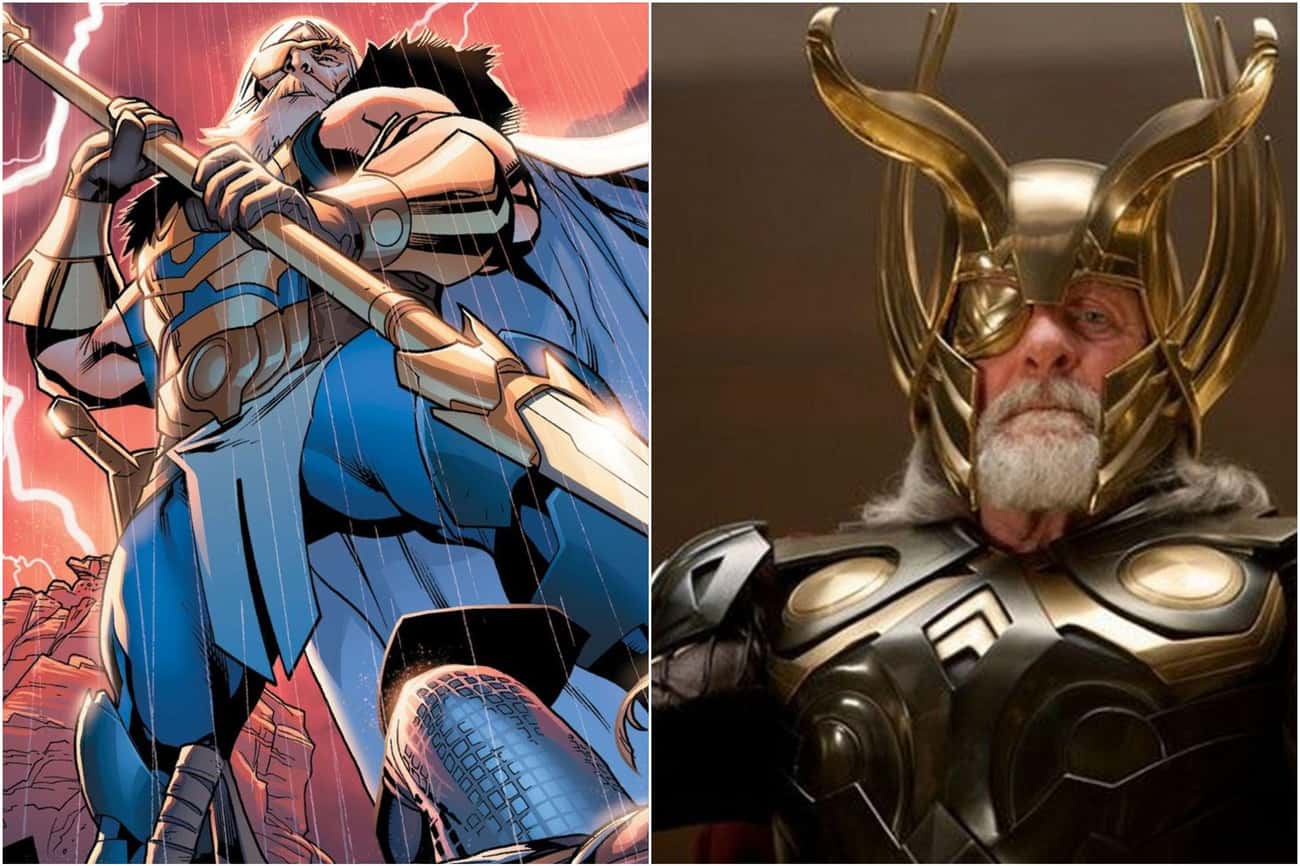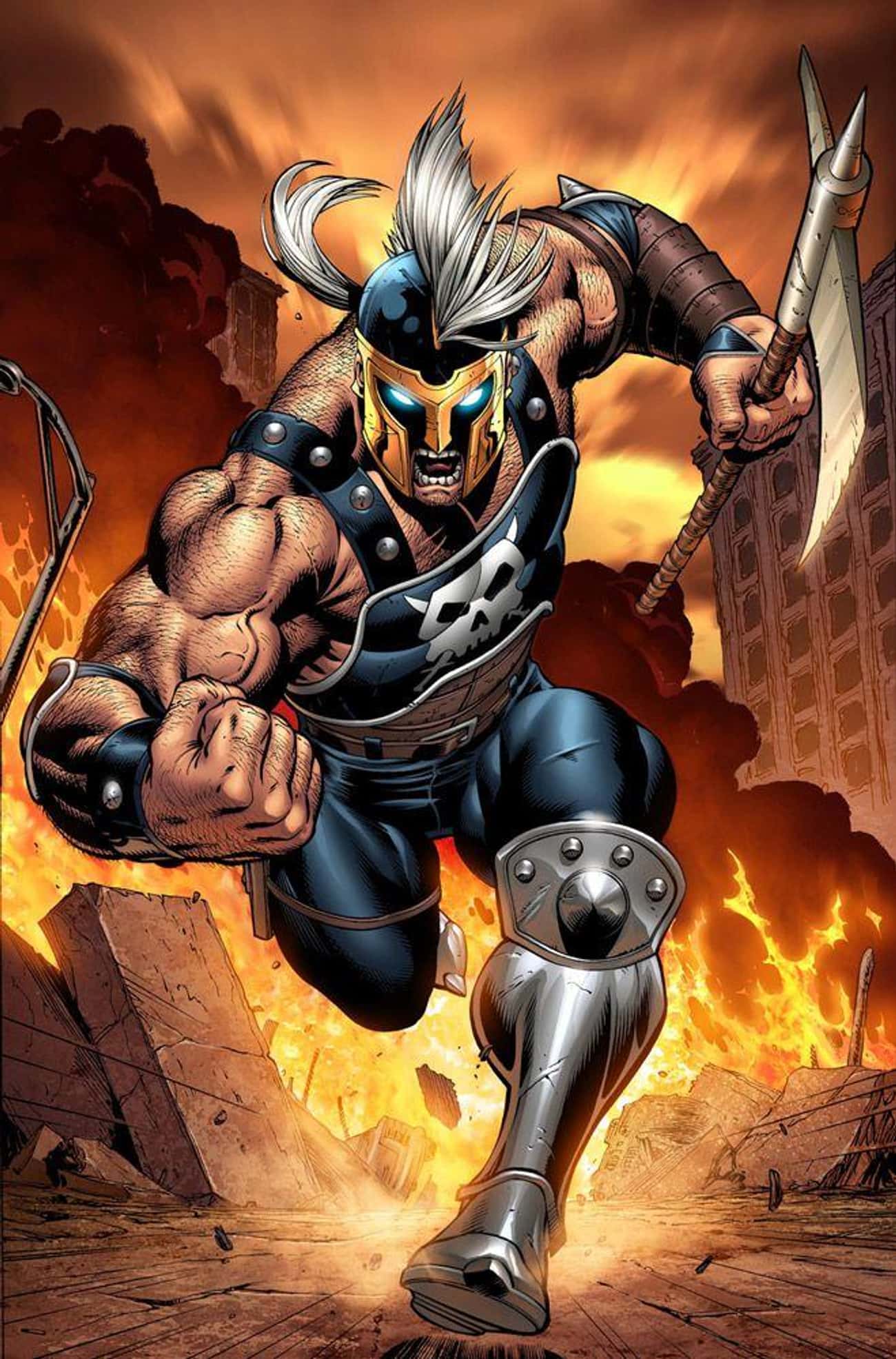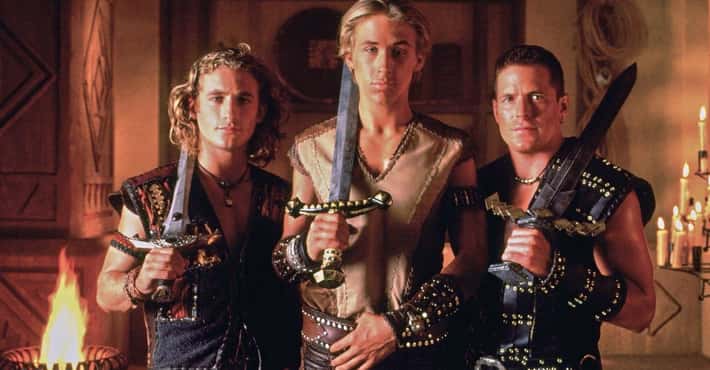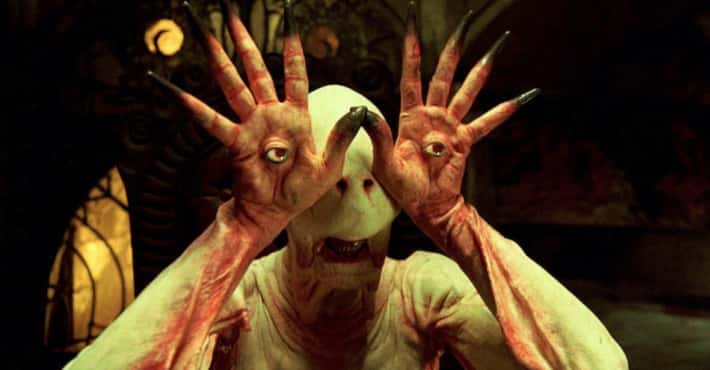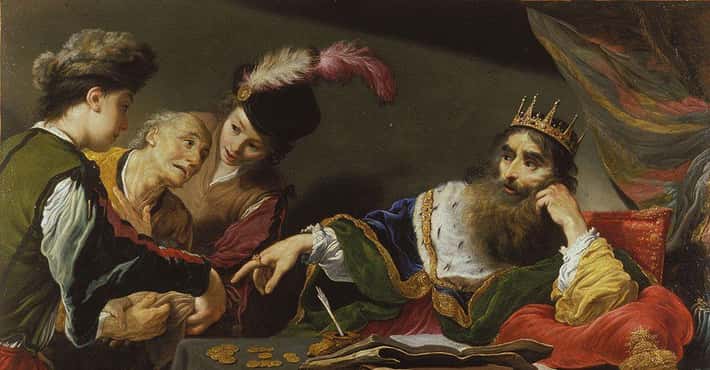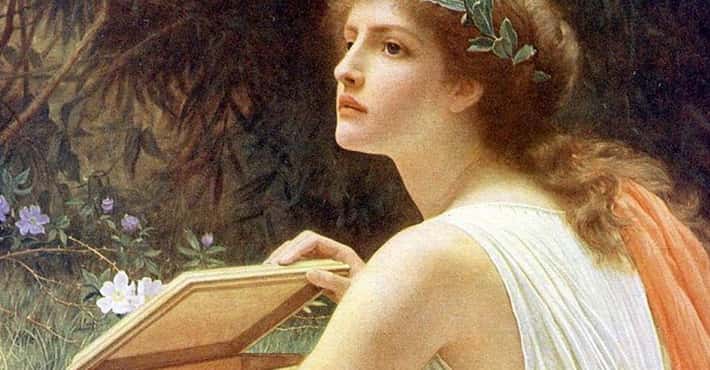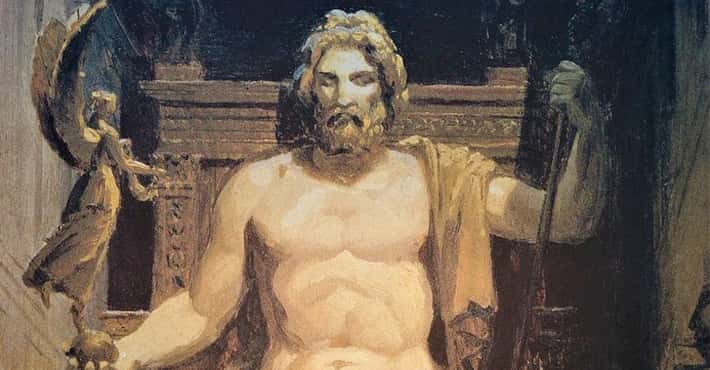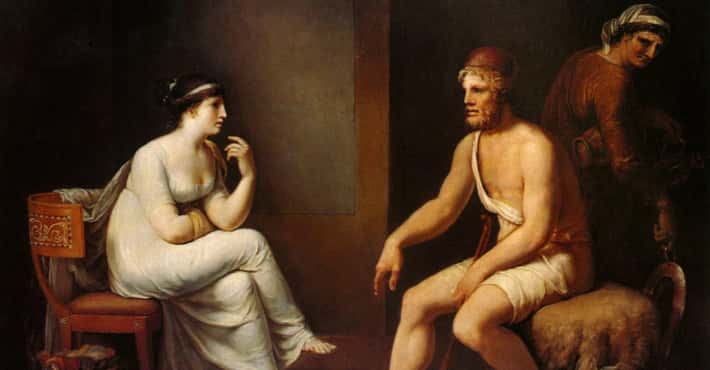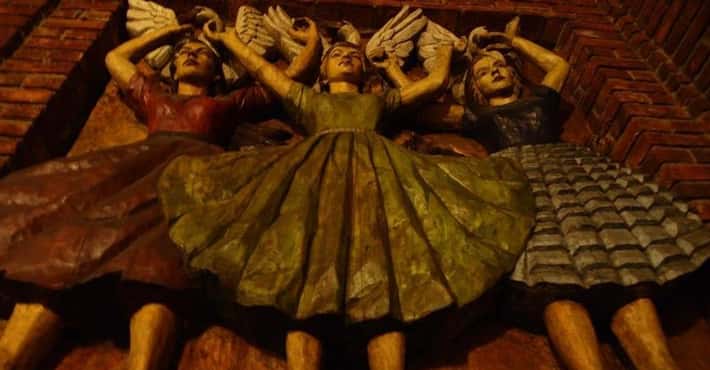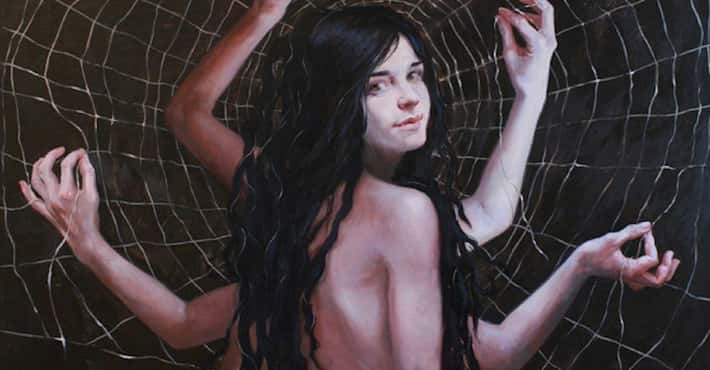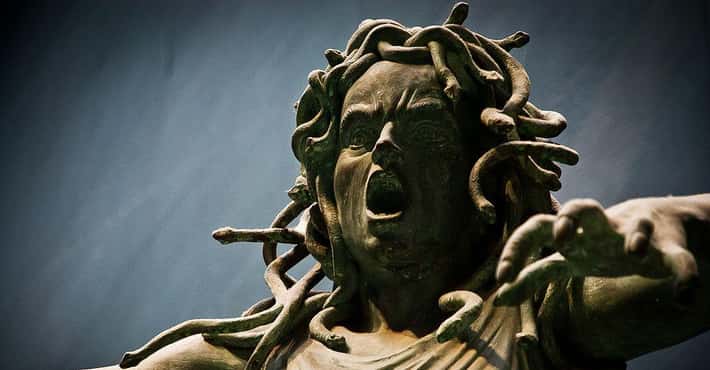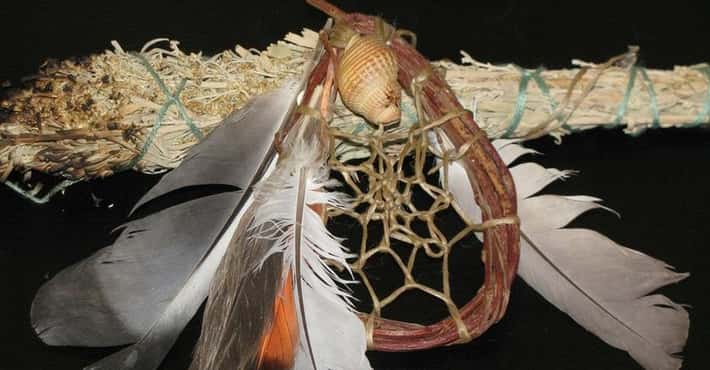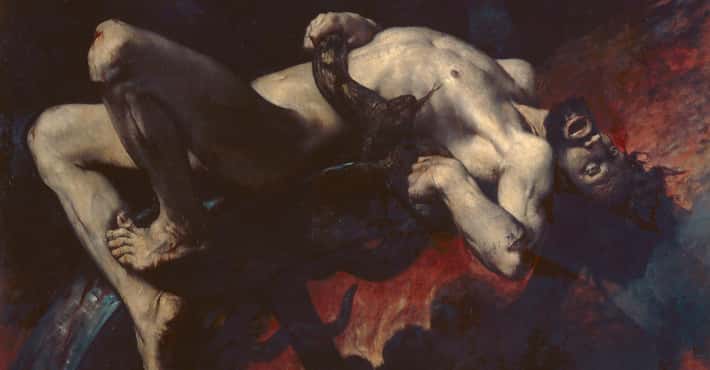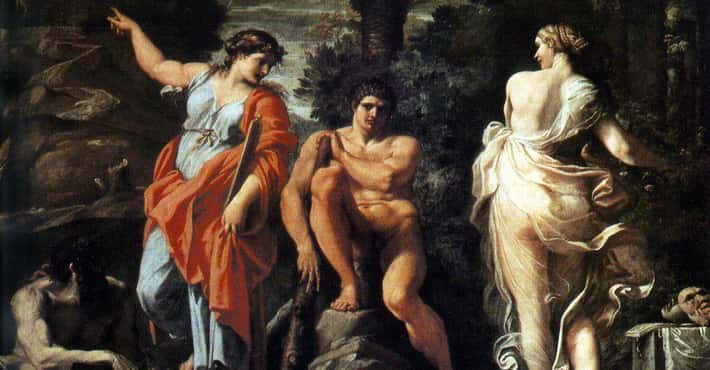Marvel Characters That Were Ripped Straight From Ancient Mythology
- 1182 VOTES
In the mythology: Although the Odin of Norse mythology is still the Allfather, creator of Earth and humankind and god of war and wisdom, he’s not quite the grizzled old warrior king depicted in the pages of Marvel Comics. Instead, the mythological Odin is more often depicted as a one-eyed old wandered, more of a benevolent wizard than anything else - one whose primary interactions with humankind came long after his busiest days were done. Still, make no mistake: Odin is a supremely powerful entity, and he does still own the throne of Valhalla, where he is surrounded by the spirits of the worthy dead.
In the comics: Everything that is true of Odin in Norse mythology is true in the comics, and then a great deal more beyond that. The Marvel Comics Odin also created humanity approximately 1 million years ago, around the same time he fathered Thor. This Allfather, however, is a significantly more active figure, frequently leading the legions of Asgard into war and ruling the Nine Realms directly from his throne. Odin isn’t the most powerful entity in the Marvel Universe, but he’s not terribly far off of that title, either.
In the MCU: The Odin of the MCU did not create humanity, nor has he been around long enough to have done so. Instead, he’s best understood as an alien warlord who conquered and then protected the group of planets known as the Nine Realms for millennia, inspiring Norse legend and otherwise remaining largely out of sight until the modern era.
- 2108 VOTES
In the mythology: Thor is perhaps the most prominent figure in Norse mythology, a god of thunder said to be worshipped by generations of warrior Vikings. Though tales of him wielding the mighty hammer Mjolnir and slaying legions of enemies with it are ostensibly heroic, Thor can also be viewed as a villain of sorts depending on one’s perspective.
In the comics: The Thor of Marvel Comics is, more or less, the exact same deity depicted in Norse mythology - save for a few bits of comic-only flair, like the worthiness enchantment on Mjolnir and his innate altruistic nature. As far as Marvel Comics is concerned, Asgard and the other realms are best understood as alternate dimensions, but their inhabitants are directly responsible for inspiring Norse mythology - which isn’t really mythology at all by this telling, just accurate history.
In the MCU: Though the lightning powers and enchanted hammer remain the same, the Thor of the MCU differs from that of Marvel Comics - and mythology - in almost every other way. This Thor has only been around for about 1,500 years, long enough to be worshipped by Vikings, but not long enough for true godhood. In the MCU, Asgardians are essentially aliens with technology so advanced it seems magical, though that distinction has begun to slip more and more as of late.
- 388 VOTES
In the mythology: Hercules, alternately known as Herakles, is perhaps the most famed demi-god in all the Greek pantheon. The son of Zeus and a mortal woman, Hercules grew up supremely strong, but was constantly harassed by Hera, Zeus’s spurned wife. At the height of their conflict, Hera tricked Hercules into slaying and consuming his own wife and children, leading him to adopt his iconic heroic labors as a means of restitution. When those were completed, Hercules was granted immortality and took his place alongside his family in Olympus for all time.
In the comics: Hercules, like all Greek mythological figures in the Marvel Universe, hails from the pocket dimension known as Olympus - but unlike his fellow Olympians, Herc spends most of his time on Earth. There, he’s been influencing worldly events since the days of Ancient Greece and right up into the modern day, where he’s frequently served as an Avenger, a Defender, and a solo hero of some repute. Aside from Thor, Hercules is the mythological figure who has had the most direct impact on protecting Earth and its people over the years, including going to war against the Chaos King and even his own father, Zeus, when the latter turned to supervillainy. Usually wielding his golden adamantine mace, Hercules is still an ever-present component of Marvel Comics to this day.
- 4133 VOTES
Bast
In the mythology: Bastet, sometimes going by Bast, is the child of Ra and an Egyptian goddess worshipped for her warrior mentality, though that reputation changed when she started to be depicted as a cat instead of a lioness. Hailing from the Bubastis region on the Nile River, hence her name, worship of Bast spread to other regions of Africa - including some fictional ones, apparently.
In the comics: Bast is the primary figure of worship in the comic book Wakanda, where she is thought to be responsible for the power behind the Black Panther. According to Bast herself, she’s a once-mortal being who gained enlightenment and moved to a higher plane of existence, only to end up worshipped by a number of earthly civilizations, to whom she bestowed several boons. Eventually, Bast would make a permanent home in Wakanda, where generations of Black Panthers would commune with her via ingestion of the heart-shaped herb and gain wondrous powers. She’s played a particularly prominent role in the life of T’Challa, the once and future king.
In the MCU: The Bast of the MCU has only ever been glimpsed during T’Challa’s visits to the Ancestral Plane. By all appearances, she’s of a similar nature to her comic book counterpart, though there’s no way of knowing for sure - or even of determining whether she was a herb-induced hallucination or not.
- 599 VOTES
In the mythology: The Loki of Norse myth is a trickster figure of sorts, though not necessarily the god of mischief. He’s actually a Frost Giant with shapeshifting powers who is an occasional war buddy (not relative) of Thor and Odin, and whose pranks were mostly harmless - until they weren’t. He’s also the father of Hel, the World Serpent, and the supernatural wolf Fenrir, as well as the mother of Odin’s eight-legged steed. Upon indirectly slaying Balder, another of Odin’s sons, Loki was condemned to a horrific fate, and upon being freed from it, he instigated Ragnarök and the end of the Norse cycle.
In the comics: Beyond the Frost Giant origin and tricksy nature, everything else about the Marvel Comics version of Loki is made up whole-cloth, largely by Stan Lee and Jack Kirby. Loki being adopted by Odin, becoming the brother of Thor, and growing into a cackling supervillain are all inventions of Marvel Comics, as is his status as an honorary Aesir. All of Loki’s many infamous pranks, however, remain canon, as does his ability to take the guise of pretty much anything. It was through these abilities that Loki served as a supervillain for several decades, becoming directly responsible for the founding of the Avengers.
In the MCU: Like Thor, the Loki of the MCU is reinterpreted as an alien instead of a supernatural being, hailing from the planet of Jotunheim and connected to Asgard through the technology of the Bifrost. Other than that, the character of the MCU Loki hews fairly close to that of Marvel Comics, with the comic book version being made younger and having his relationship to Thor further emphasized in order to achieve even further synchronicity. Both Lokis caused the Avengers to come together, but aside from that, their storylines have diverged quite wildly.
- 6103 VOTES
In the mythology: Zeus was, after a fashion, the leader of the Greek gods of Olympus, from which he ruled with his mighty lightning bolts and host of other magical powers. Unlike his Norse counterpart, Odin, Zeus did not create humanity, but he did create the first woman, Pandora, and used her to unleash evil into the world. In general, Zeus’s depiction has been that of a pseudo-villain more so than a heroic figure, and his deceitful and deeply problematic romantic history is the clearest indication of that.
In the comics: In the annals of Marvel Comics lore, the Olympians are deities of a sort, but they hail from a “pocket dimension” known as Olympus, which at one time was directly connected to Ancient Greece. It was there that Zeus developed his reputation as an overseer of humanity, though he would retreat in the centuries to come and only rarely step in to influence the comings and goings of Earth. In the modern era, Zeus has often been an antagonist to other godly heroes, such as Thor and his own son Hercules, and has even occasionally dabbled in outright supervillainy.
In the MCU: The casting of Russell Crowe as Zeus in Thor: Love and Thunder, heralded the arrival of the Greek pantheon to the Marvel Cinematic Universe.
- 7102 VOTES
In the mythology: Ares is the Greek god of war, known primarily for his role in several myths, rather than for any widespread worship of his personage. Whereas Athena represented the honor and glory of war to the Greeks, Ares represented the brutality of it, and his history is filled with several atrocities, including instigating international conflict and demanding human sacrifice.
In the comics: Although he’d been around since the days of Ancient Greece, when his home dimension of Olympus interacted with the local populace, Ares didn’t become a prominent figure in the Marvel Universe until the modern era. There, he stepped up to join Norman Osborn’s Dark Avengers, filling in for Thor as the team’s go-to god. He remained linked with Osborn until Osborn laid siege to Asgard, after which the immensely strong Ares turned on his boss - and was torn to shreds by the Sentry as a result.
In the MCU: The head of Ares was glimpsed on the planet Sakaar in Thor: Ragnarok, suggesting a past visit to the planet’s gladiatorial arena.
- 887 VOTES
In the mythology: For such a well-known name, the Norse goddess of death plays a surprisingly small role in the traditional mythology. Hel, as she is known there, is the daughter of Loki and the ruler of a realm bearing her name, where she gathers the souls of the dead, save for those worthy enough of inclusion in Valhalla. Hel only really shows up in one notable Norse tale, wherein she refuses to give up Baldur, son of Odin, after his demise was orchestrated by her father.
In the comics: Going by Hela in the pages of Marvel Comics, the goddess of death is a much more prominent figure, frequently harassing Thor and the people of Midgard as a power-hungry villain bent on expanding her posthumous empire. This Hela is a mighty sorcerer with legions of undead at her beck and call, though she’s only rarely been able to extend her influence outside of Hel. Here, too, she is Loki’s daughter, though their relationship is decidedly complicated.
In the MCU: The Hela of the MCU is Loki’s adoptive sister, not his daughter, and that’s not where the dissimilarities end. MCU Hela calls on necroswords that are more reminiscent of the comic book villain Gorr than her usual power set, and her backstory has been rewritten in its entirety. Her reign of terror is also considerably shorter, only lasting the length of Thor: Ragnarok.
- 9107 VOTES
Amatsu-Mikaboshi
- Photo:
In the mythology: Little is known of the Shinto figure known as Amatsu-Mikaboshi, and alternatively as the “Chaos King” and the “Dread Star of Heaven.” According to Japanese mythology, Amatsu-Mikaboshi turned against the other gods in heaven, possibly for malevolent reasons, and tried to conquer it at some point, but was beaten into submission.
In the comics: The Chaos King has found a great deal more success in the Marvel Universe. There, he’s not a Shinto Amatsu-Kami at all, but a primordial being who was once imprisoned by the Amatsu-Kami, only to reemerge in the modern Marvel age as a threat to all god-kind. He’s clashed with both Thor and Hercules before, and once instigated an entire war in an attempt to enslave or consume all of Earth’s deities, though he was beaten back at the last minute by an ad-hoc God Squad of mythological superheroes.
- 1049 VOTES
Gilgamesh
In the mythology: Gilgamesh is a pseudo-historical figure, thought to be the actual fifth king of Uruk in Sumeria, circa the 26th century BCE. Whatever Gilgamesh actually did in life, however, was greatly exaggerated in The Epic of Gilgamesh, written several hundred years after his demise. That tome told of Gilgamesh wrestling lions and going on great adventures with Enkidu, before eventually defeating death itself and ascending to godhood.
In the comics: Gilgamesh is one of the physically toughest member of the Eternals, and unlike most members of his race, he doesn’t mind getting heavily involved with humanity. Gilgamesh ruled Sumeria for centuries, adventured around with Hercules, and fought in countless ancient wars. At some point, Gilgamesh was exiled from Eternal life and dubbed the Forgotten One, but he eventually returned to prominence and went on to join the Avengers, among many other notable achievements.
In the MCU: Ancient adventures and super-strength are about the only things the Gilgameshes of Marvel Comics and the MCU have in common. The MCU’s Gilgamesh is only the forgotten one by choice, isolating himself so that he can take care of the ill Thena, his lover of several millennia. Though he’s perished several times in the comics, when he does so in the MCU, it appears to be a permanent end.
- 1153 VOTES
Thena/Athena
In the mythology: Athena, daughter of Zeus, is one of the more important goddesses in the Greek pantheon, and has a host of responsibilities to match - wisdom, war, peace, and crafts. She’s either named after or the namesake of Athens, and is also its patron deity. Said to be perhaps the strongest of all the gods, even Ares feared Athena, both for her might and the wisdom with which she yielded it. She also appears in countless myths as a benevolent guide to several legendary heroes, including Hercules and Perseus.
In the comics: The annals of Marvel Comics are home to two beings who claim to have inspired the myth of Athena, and they’re both partially right. The real deal is the actual Greek goddess herself, daughter of Zeus and half-sister of Hercules, most commonly involved in the affairs of her sibling as an ally and occasional antagonist.
Then there’s Thena of the Eternals, a million-year-old immortal creation of the Celestials and one of her race’s greatest warriors. In the comics, Thena is perhaps best known for her extremely long-term forbidden affair with Kro, the leader of the Deviants. Thena and Athena have met before and clashed over their mutual association with the religion of Ancient Greece, but they got over it. According to official Marvel canon, Athens is named after Thena, and not the actual Athena.
In the MCU: The Thena of Eternals doesn’t have a Greek namesake to compete with, but she does have the Mahd Wy’ry, along with the demise of her lover Gilgamesh (to whom she has little connection in the comics). Still, this Thena overcomes her difficulties and proves herself as the Eternals’ greatest warrior all the same, in keeping with her reputation.
- 1274 VOTES
In the mythology: The folklore figure known as both Sun Wukong and the Monkey King is the protagonist of the 16th-century Ming dynasty novel Journey to the West, which continues to be deeply influential in Eastern mythology. Born from a rock fully formed, Sun Wukong became a leader of monkeys and then a noted trickster of humankind, until he’d developed enough of a reputation to join the Jade Emperor and other gods in heaven. Unfortunately, Sun Wukong couldn’t cool it with the pranking, so he wound up booted out of heaven and imprisoned under a mountain by Buddha. 500 years later, the Monkey King would be freed by a monk, whom he then accompanied on that titular journey to the West.
In the comics: In the Marvel Universe, the tale of Sun Wukong actually happened, nearly word-for-word, but the Monkey King still faded from existence centuries before the modern era. A crime lord who styled himself as the new Monkey King, however, wound up inhabited by the spirit of Sun Wukong and was granted a shot at redemption, which he took. Imbued with immortality and a bevy of martial arts-related powers, the Monkey King has become a genuine superhero, frequently teaming up with the likes of Iron Fist and Shang-Chi.
- 1350 VOTES
In the mythology: Icarus is a household name in classical Greek mythology, despite not being a god nor any sort of supernatural creature at all. Icarus was the son of famed inventor Daedalus, who built the Labyrinth on Crete only to be locked in a tower for his troubles. Daedalus whipped up a pair of waxen wings for him and Icarus to escape the tower, warning his son not to fly to close to the sun. Then, Icarus flew too close to the sun, the wings melted, and he fell to his demise.
In the comics: The story of Marvel’s Ikaris is significantly more impressive. He’s a million-year-old member of the Eternals, created by the Celestials to watch over the experiment that is life on Earth - and he’s also arguably the closest thing Marvel Comics has to a Superman. Often recognized as the martial leader of the Eternals, Ikaris is strong enough to go toe-to-toe with Thanos - which he has on multiple occasions - on top of his bevy of other powers like flight and cosmic eye blasts. In this universe, it was Ikaris’s ability to fly that inspired Daedalus to pursue winged flight in the first place, leading him to name his son after Ikaris - only for it all to end in predictable tragedy.
In the MCU: The Ikaris of the MCU is identical to that of Marvel Comics, with two notable distinctions: his romance with Sersi, and his turn as the villain of Eternals. In this telling, Ikaris was more directly responsible for the Greek myth, with the doomed flight turning out to be a story woven by Sprite to explain Ikaris’s departure from Ancient Greece. And, by the end of the film, Ikaris would fly too close to the sun for real.
- 1443 VOTES
In the mythology: Scholars will debate as to how real the historical figure of King Arthur Pendragon was, but there’s no denying the existence of the myth. Popularized in the centuries following his supposed life, Arthurian legend tells of Arthur, his castle in Camelot, his sword Excalibur, and his Knights of the Round Table. As his tale progressed, Arthur increasingly encountered supernatural elements like the wizard Merlin and Morgan le Fay, and following his own demise, a buried Arthur was said to provide mystical protection over Britain for all the centuries thereafter.
In the comics: According to Marvel Comics history, Arthur and his Knights of the Round Table were absolutely real, and all of their adventures, including those dealing with magic and monsters, definitely happened. Not only have several superheroes journeyed back in time to hang around with Arthur and his retinue, but the legacy of the Round Table has also extended well into the modern era through the continued existence of heroes like the Black Knight and the passing down of Excalibur. Following his demise, Arthur moved on to the mysterious and magical realm of Otherworld, where he continues to influence Earth-centric politics, as often as a hero as a problematically backwards villain with a strong anti-mutant bent.
- 1540 VOTES
In the mythology: With winged heels and a bowl-shaped hat, Mercury is the Roman god of a great many things, including travelers and merchants. He is closely associated with and adapted from the Greek god Hermes, messenger of Olympus, and is also linked to modern cupid folklore. In any iteration, Mercury’s game is all about super-speed, and that’s true in the comics, too.
In the comics: The Makkari of Marvel Comics lore is the fastest member of the immortal Eternals, and perhaps the fastest being in the Marvel Universe, period, as evidenced by their win in the Galactic Marathon. Though the comic book Makkari has been reborn through the Eternals’ Machine into bodies with multiple gender expressions, one thing remains consistent: Makkari is always the first Eternal into a battle, and always one of their more public faces. In this version of history, there is also a real Greek god by the name of Hermes, but Makkari is still partly responsible for inspiring the myths of Mercury through his speedy adventures.
In the MCU: The comic book Makkari and the one glimpsed in Eternals share only a name and a set of powers - though the super-speed of the MCU’s Makkari is noticeably toned down. Every other character trait, from Makkari’s deafness to her romance with Druig, are inventions of the MCU that were only later adapted into the comics.
- 1642 VOTES
In the mythology: In classical Greek mythology, as told by the Odyssey, Circe is the sorcerous daughter of Helios, god of the sun, and an ocean nymph. Circe set up camp on the all-vowel island of Aeaea, where she encountered Odysseus and his companions and turned them all into pigs. In fact, transforming people into animals was kind of Circe’s whole jam, and her specialities included lions, wolves, and those aforementioned pigs.
In the comics: The Eternal Sersi of Marvel Comics lore isn’t just responsible for turning Odysseus’s men into pigs with her transmutative powers and inspiring Homer; she’s also secretly behind a great deal more Greek mythology than that, including the stuffing of Pandora’s Box. In more modern times, she joined the adventures and romanced the Black Knight, though her true heart always belonged to Makkari, her fellow Eternal. On at least one occasion, Sersi has saved the entire Marvel Earth from destruction at the hands of the Celestials, and she's also a veteran of multiple intergalactic conflicts.
In the MCU: Sersi is the central character of 2021’s Eternals, in which she also saves the Earth from Celestial erasure. In this telling, it is Ikaris, and not Makkari, who completes her love triangle with the Black Knight, and there’s no Avengers roster spot to tell of quite yet, but otherwise the two portrayals are quite similar.
- 1740 VOTES
Phobos
- Photo:
In the mythology: Phobos and Deimos were the sons of Ares, the Greek god of war, and each of the brothers represented different aspects of fear. Where Deimos personified terror and dread, Phobos personified panic, flight, and rout. Each brother was said to follow their father to war, essentially serving as an extended metaphor for how quickly fear spreads through a battlefield. Neither feature particularly prominently in any notable myths.
In the comics: There have been a few Phoboses and Deimoses throughout the Marvel eons, but the most important edition is the demi-god known as Alexander Aaron, who later adopted his traditional name of Phobos. This Phobos was the child of Ares and a human woman, one that led a fairly ordinary life until Nick Fury recruited him to the Secret Warriors and let him in on the secret of his godly heritage - and the fear-inducing powers that came with it. Tragically, Phobos would perish in the line of duty a few years after his recruitment.
- 1841 VOTES
Sprite
In the mythology: In English folklore, the term “sprite” can refer to a few different types of fairies, but primarily those mischievous beings more commonly known as hobgoblins, Pucks, or Robin Goodfellows. Best known for their appearance in Shakespeare’s A Midsummer Night’s Dream, sprites are trickster types who use shapeshifting and other magical abilities to play frightening, but ultimately mostly harmless, pranks on humankind.
In the comics: Sprite is an Eternal who has been stuck in the body of a child for a million years, and has an attitude to match. Their powers of illusion have been used to inspire countless trickster myths over the years, and sometimes to create a great deal more trouble than that, such as the time Sprite erased all the memories of their fellow Eternals in a misguided bid to grow up. Sprite has been reborn with a variety of sexes and genders over the years, and has recently developed a close bond with Ikaris, in keeping with the MCU’s adaptation.
In the MCU: There are a lot of similarities between the Marvel Comics Sprite and that of the MCU, but they’re only vague ones - the abilities, the betrayal of the Eternals, the desire to grow old. In this version, at least, Sprite is successful in her endeavor to age, giving up her immortality so that she can finally live some semblance of a normal life.



